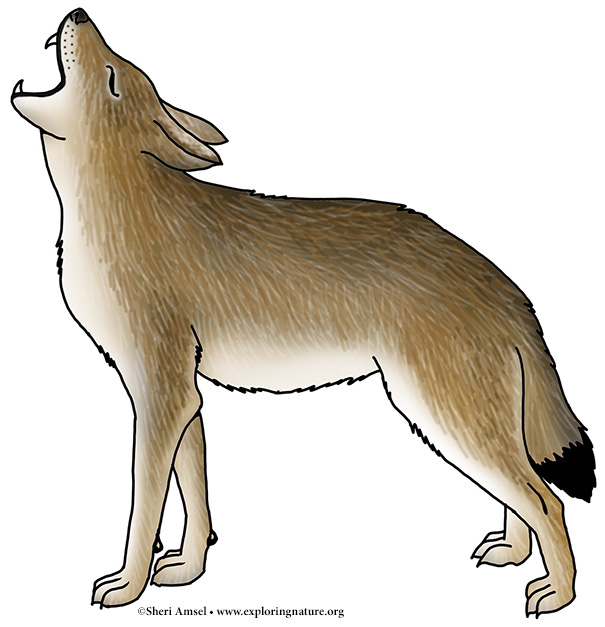

Coyote are found all across North America.
They are found in all habitats from woodlands and fields to deserts.
Their fur is frosty gray to brown with a light-colored belly. They have a bushy tail with a black tip. They walk and run with their tail hung down. They weigh from 20-50 pounds.
They are more active at night (nocturnal). They live in dens. Coyotes are survivors. They adapt better than wolves to living near humans. They can run up to 40 mph. They can jump 8-foot tall fences.
They eat what they can find. They are scavengers. They also hunt small mammals and even deer.
Predators are bears and wolves, though there are much fewer of those now, so they pose little threat to the coyote population.
Females are pregnant for about 60 days (gestation) and can have more than 12 pups in one litter, though usually they have 6.
They live up to 15 years in the wild. They are not threatened.
Kingdom: Animalia
Phylum: Chordata
Subphylum: Vertebrata
Class: Mammalia
Order: Carnivora
Suborder: Caniformia
Family: Canidae
Genus: Canis
Species: Canis latrans
When you research information you must cite the reference. Citing for websites is different from citing from books, magazines and periodicals. The style of citing shown here is from the MLA Style Citations (Modern Language Association).
When citing a WEBSITE the general format is as follows.
Author Last Name, First Name(s). "Title: Subtitle of Part of Web Page, if appropriate." Title: Subtitle: Section of Page if appropriate. Sponsoring/Publishing Agency, If Given. Additional significant descriptive information. Date of Electronic Publication or other Date, such as Last Updated. Day Month Year of access < URL >.
Amsel, Sheri. "Coyote" Exploring Nature Educational Resource ©2005-2024. December 13, 2024
< http://www.exploringnature.org/db/view/Coyote >

